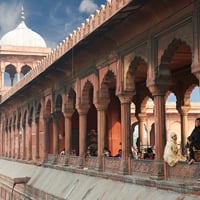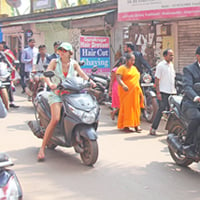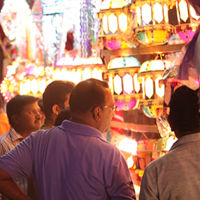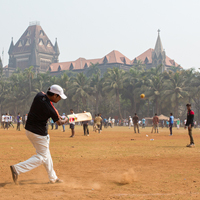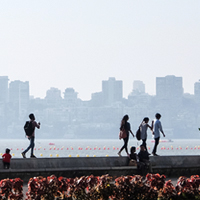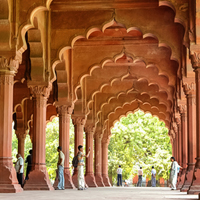India
Coastal BeachesIndia is a vast South Asian country with diverse terrain – from Himalayan peaks to Indian Ocean coastline – and history reaching back 5 millennia. It's the seventh-largest country by land area, the second-most populous country with over 1.3 billion people, and the most populous democracy in the world. India's landscapes are as fantastically varied as its cultural traditions. From the snow-dusted peaks of the Himalayas to the sun-splashed beaches of the tropical south, the country has a bounty of outdoor attractions. The country has a rich heritage and many enthralling historical sites, including the Taj Mahal, one of the Seven Wonders of the World. India's vast history is evident in its diverse languages, traditions, festivals, and spiritual practices. Indian cuisine, characterized by its sophisticated and subtle use of many spices and vegetables, is also a vital part of its culture. The economy of India is characterized by a growing middle class and a large and young labor force, making it a hub of innovation and industry. The country is also known for its IT and software services, with Bangalore often referred to as the Silicon Valley of India. Despite its fast-growing economy, India still faces challenges such as poverty, corruption, and inadequate public healthcare. India is a kaleidoscope of landscapes, cultures, and people, making it a fascinating country to explore and understand.
 AGS Worldwide Movers
AGS Worldwide MoversGet Quote
Relocating abroad soon? Make your move with AGS! AGS Worldwide Movers is a leader in the international moving industry. Our experience and expertise allows us to guarantee our clients the best quality moving services.
 AGS Worldwide Movers
AGS Worldwide MoversRelocating abroad soon? Make your move with AGS! AGS Worldwide Movers is a leader in the international moving industry. Our experience and expertise allows us to guarantee our clients the best quality moving services.
Get Quote
Living in India
Best Places to Live in India
Visa & Residency
Obtaining a residency in India involves several steps and the process can vary depending on the type of visa applied for. The most common types of visas for expats seeking residency are the Employment Visa and the Entry (X) Visa. The Employment Visa is designed for foreigners who are taking up employment in India. To qualify, applicants must have a job offer from an Indian company and the salary must exceed a certain threshold. The application process involves submitting a visa application form, passport-sized photographs, a valid passport, proof of employment, and the requisite fee. The Entry (X) Visa is for individuals of Indian origin and their family members, as well as for those coming to India for volunteer work or to accompany a spouse or family member who is in India on a long-term visa, such as an Employment Visa. The process for obtaining these visas typically starts with filling out an online application form and scheduling an appointment at the nearest Indian consulate or embassy. Applicants must provide various documents, including a passport with at least six months' validity, passport-sized photographs, and supporting documents relevant to the type of visa, such as a job offer letter for an Employment Visa or proof of Indian origin for an Entry (X) Visa. The difficulty of the process can vary based on the applicant's nationality, the completeness of their application, and the specific requirements of the local Indian consulate or embassy. Generally, the process is considered average in terms of difficulty, but it can be time-consuming and requires attention to detail to ensure all requirements are met. Once the application is submitted, it is reviewed by the consulate or embassy, and if approved, the visa is stamped into the applicant's passport. The duration of the visa can vary; Employment Visas can be issued for the duration of the contract, up to a maximum of five years, while Entry (X) Visas can also be issued for up to five years and can be extended in India. It is important to note that all foreign nationals must register with the Foreigners Regional Registration Office (FRRO) within 14 days of arrival in India if they are planning to stay for more than 180 days.
Healthcare in India
The healthcare system in India is a mix of public and private sector providers. The public healthcare system is made accessible to all Indian citizens and is mostly free, but it often suffers from underfunding, overcrowding, and limited rural coverage. Private healthcare in India is known for its higher quality and efficiency but comes at a cost, making it less accessible to the lower-income population. India has a vast network of hospitals and clinics, and it is also a popular destination for medical tourism due to the relatively low cost and high quality of its private medical services. Expats and digital nomads can access public healthcare by registering with the local government health system, but many opt for private health insurance to ensure access to private hospitals and clinics, which offer shorter wait times and more comfortable facilities.
Cost of Living
The cost of living in India varies greatly depending on the region and city, with urban areas typically being more expensive than rural areas. Overall, India is known for having a moderate cost of living, with affordable food, housing, and services compared to many Western countries.
Weather
India has a predominantly tropical climate but also features other climate zones. The north experiences temperate weather, while the south has a tropical monsoon climate. The Himalayan region has a cold, alpine climate. Seasonal monsoons bring heavy rainfall to most of the country from June to September.
Educational System in India
The educational system in India is vast and diverse, catering to over 1.3 billion people. It is structured into different levels: pre-primary, primary, upper primary, secondary, and higher secondary. Education in India is overseen by both the central and state governments, with various boards governing school education, including the CBSE, ICSE, and state boards. Children typically start school at the age of 3 or 4 with kindergarten, followed by 1st grade at the age of 6. The primary school runs from 1st to 5th grade, upper primary from 6th to 8th grade, secondary from 9th to 10th grade, and higher secondary from 11th to 12th grade. After completing the 10th grade, students take a set of board exams, which are crucial for determining their academic stream in the higher secondary level, where they choose between arts, commerce, or science streams. The school year in India usually runs from April to March, and the medium of instruction varies, including English, Hindi, and other regional languages. The quality of education can vary significantly, with private schools generally offering better facilities and learning environments than many government schools. However, there are also centers of excellence among government schools, especially in urban areas. After completing the 12th grade, students take another set of board exams, which are critical for university admissions. The Indian government has been working on initiatives to improve the educational infrastructure and quality, aiming to provide inclusive and equitable quality education for all.
Copyright 1997-2025 Burlingame Interactive, Inc.


